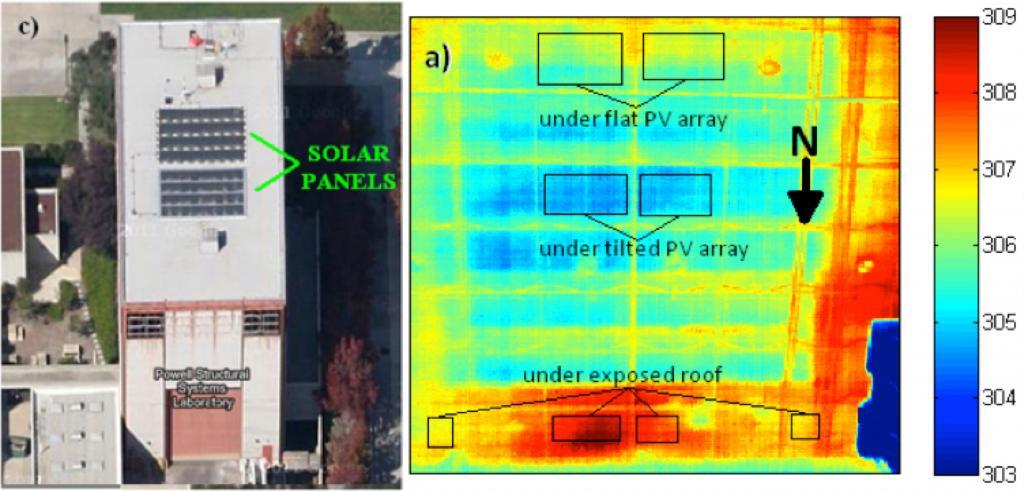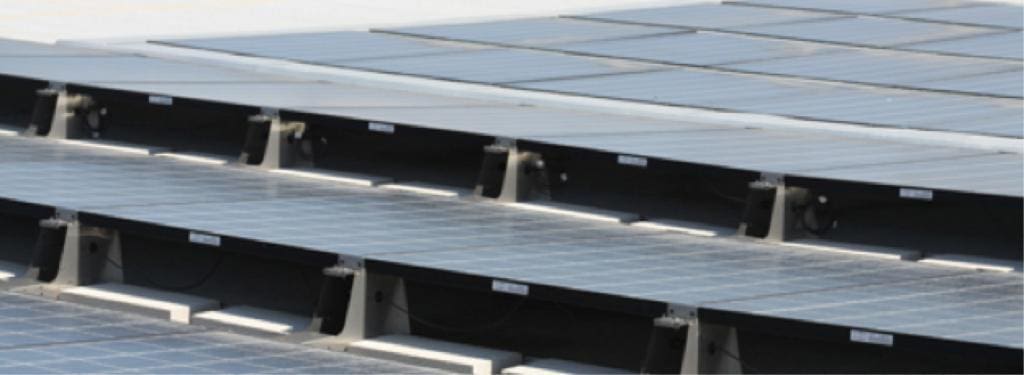A study by the University of California, San Diego (UCSD) has concluded that PV modules keep buildings significantly cooler in summer through passive solar cooling.
The UCSD researchers concluded that rooftops with PV installed kept buildings up to 5 °C cooler during the day than areas without. For their case study at the Jacobs School of Engineering UCSD conducted in 2011, this equates to a reduction in the annual cooling load of 38% and amounts to cost savings equivalent to 5% of the total cost of the PV system over its lifetime.
Image Credit: UCSD
The effect is similar to that of double-glazed windows, which use a strip of air between two glass sheets to act as a thermally-insulating layer that reduces heat loss and gain through it. The minor difference in this case is that the air flow below the PV modules also helps to transfer heat away from the building and instead into the atmosphere. Tilted PV panels enabled greater cooling benefits as the surrounding air is able to circulate more freely between the panels and the roof.
Tilted modules (bottom) enable more cooling due to the increased air flow between the modules and roof. Image Credit: UCSD
It must be noted that during colder months the PV modules have the effect of reducing the amount of heating to the building caused by the sun. However, the data from the study showed that this is negated by the tendency of panels to reduce heat loss from the building at night. There was no appreciable change in the annual heating loads for the UCSD site.
The study illustrates the complementary nature of energy-efficient design and PV. By reducing the heating and/or cooling loads of a building, the amount of PV required to account for the remaining loads reduces with it. Energy efficiency measures are often ‘low‑hanging fruit’ when it comes to reducing the energy costs of buildings and regularly offer attractive project payback times when designed correctly.
The findings of this study may prove to be an important factor when deciding for or against a PV installation, as the potential to reduce the annual cooling load of a building by up to 38% may make certain projects more financially attractive. However, this may also be at the detriment of building‑integrated photovoltaics (BIPV) uptake since they are often replacements for building façades or roofs and are unlikely to provide the insulating benefits that mounted and tilted PV modules apparently offer.
Solar PV generators are perfectly suited for providing electricity during hot summer months, a time when our electricity grid needs all the help it can get. If implemented on a large scale, solar PV can also significantly reduce the wholesale cost of electricity by reducing electricity demand placed on the grid.
© 2014 Solar Choice Pty Ltd

